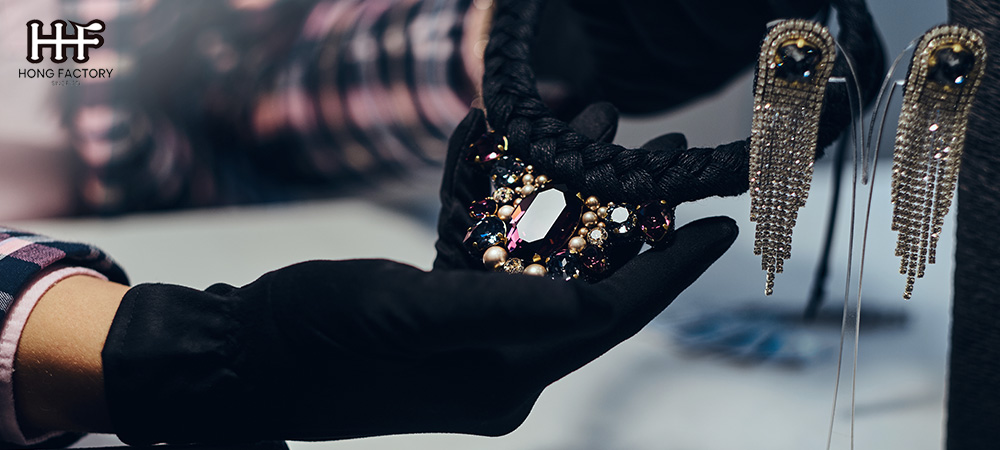Custom jewelry is a unique and personal way to express individuality and style. Whether it’s a bespoke engagement ring or a personalized necklace, custom jewelry allows for creativity and personalization that mass-produced pieces cannot offer. In this article, we’ll explore the comprehensive process of custom jewelry production to order, breaking down each step involved in bringing a unique piece of jewelry from concept to completion.
Understanding Custom Jewelry
Custom jewelry refers to pieces that are designed and crafted specifically for an individual, based on their preferences and specifications. This process involves collaboration between the client and the jeweler to create a one-of-a-kind piece that reflects the client’s style, personality, and desires.
The Importance of Custom Jewelry
Custom jewelry holds significant value due to its uniqueness and sentimental importance. It allows individuals to create pieces that tell a story, commemorate special occasions, or symbolize personal milestones. Additionally, custom jewelry can be tailored to fit specific tastes, ensuring that the final product is exactly what the client envisions.

Steps in Custom Jewelry Production
Creating custom jewelry involves several detailed steps. Each stage requires careful consideration and skilled craftsmanship to ensure the final product meets the client’s expectations.
1. Initial Consultation
The process begins with an initial consultation between the client and the jeweler. During this meeting, the client shares their vision for the piece, including design ideas, preferred materials, budget constraints, and any specific requirements they may have. This is also an opportunity for the jeweler to provide guidance on feasibility and offer creative suggestions.
Key Considerations During Consultation
- Design Preferences : Discussing style elements such as vintage, modern, or minimalist designs.
- Material Choices : Exploring options like gold, silver, platinum, or alternative metals.
- Gemstone Selection : Considering various gemstones based on color, cut, clarity, and carat weight.
- Budget : Establishing a clear budget range to guide material and design decisions.
2. Design Development
Once the initial consultation is complete, the jeweler begins developing design concepts based on the client’s input. This stage often involves creating sketches or digital renderings to visualize different design options.
Tools Used in Design Development
- Sketching : Hand-drawn sketches provide a tangible representation of initial ideas.
- Computer-Aided Design (CAD) : Advanced software allows for precise digital models of the jewelry design.
- 3D Rendering : Creating realistic images of how the finished piece will look.
3. Approval of Design
After presenting design options to the client, adjustments are made based on feedback until a final design is approved. This step ensures that all aspects of the piece align with the client’s vision before moving forward with production.
4. Material Selection
With an approved design in hand, it’s time to select materials. This includes choosing metals and gemstones that will be used in crafting the piece. The jeweler sources high-quality materials that meet both aesthetic and ethical standards.
Factors Influencing Material Selection
- Durability : Ensuring materials are suitable for everyday wear if required.
- Ethical Sourcing : Choosing conflict-free gemstones and responsibly sourced metals.
- Aesthetic Appeal : Matching colors and textures with design intentions.
5. Craftsmanship and Production
The actual production of custom jewelry involves skilled craftsmanship. Depending on complexity, this can include casting, setting stones, engraving details, or intricate metalwork.
Techniques in Jewelry Making
- Casting : Creating molds for metal components.
- Stone Setting : Carefully placing gemstones into their settings.
- Engraving : Adding personalized details or inscriptions.
- Polishing and Finishing : Ensuring a flawless finish on all surfaces.
6. Quality Assurance
Before delivering the final product to the client, rigorous quality checks are conducted. This ensures that every aspect of the piece meets high standards of craftsmanship and adheres to design specifications.
Quality Checks Include
- Structural Integrity : Verifying durability and strength.
- Gemstone Security : Ensuring stones are securely set.
- Aesthetic Consistency : Checking for uniformity in appearance.
7. Final Presentation
Once quality assurance is complete, the custom jewelry piece is ready for presentation to the client. This moment marks the culmination of creativity and craftsmanship coming together in a tangible form.
Benefits of Custom Jewelry
Opting for custom jewelry offers numerous benefits
- Personalization : Tailored designs that reflect individual taste.
- Exclusivity : Owning a unique piece not found elsewhere.
- Sentimental Value : Creating meaningful connections through personalized elements.
Tips for Ordering Custom Jewelry
If you’re considering ordering custom jewelry, here are some tips to ensure a smooth process
- Research Jewelers : Choose reputable jewelers with experience in custom designs.
- Communicate Clearly : Be specific about your preferences and expectations during consultations.
- Be Open-Minded : Trust your jeweler’s expertise when it comes to technical aspects or alternative suggestions.
- Plan Ahead : Allow sufficient time for each stage of production – rushing can compromise quality.

The Future of Custom Jewelry
As technology continues to advance, the custom jewelry industry is evolving in exciting ways. Innovations in design and production techniques are enhancing the ability to create intricate and personalized pieces with greater precision and efficiency.
Technological Advancements
- 3D Printing : This technology allows jewelers to create detailed prototypes quickly and accurately. It also enables more complex designs that might be difficult to achieve through traditional methods.
- Augmented Reality (AR) : AR applications are being used to provide clients with virtual try-ons of custom pieces. This helps clients visualize how a piece will look on them before it is physically made.
- Blockchain Technology : Used for tracking the provenance of gemstones and metals, blockchain ensures ethical sourcing and transparency in the supply chain, which is increasingly important to consumers.
Sustainable Practices
The demand for sustainable and ethically produced jewelry is on the rise. Jewelers are increasingly focusing on eco-friendly practices, such as using recycled metals and lab-grown gemstones, to reduce their environmental impact.
- Recycled Metals : Using metals from recycled sources minimizes mining activities, which can be harmful to the environment.
- Lab-Grown Gemstones : These are created in controlled environments, reducing the need for mining and offering a more sustainable option without compromising quality or appearance.
Customization Trends
The trend towards personalization continues to grow, with more consumers seeking unique pieces that reflect their personal stories and values. Jewelers are responding by offering a wider range of customization options, from engraving personal messages to incorporating birthstones or other meaningful elements into designs.
Conclusion
Custom jewelry production is an intricate process that combines artistry with technical skill. From initial consultation through final presentation, each step plays a vital role in transforming ideas into reality while ensuring exceptional quality at every turn.By understanding these steps involved in creating bespoke pieces tailored specifically for you or loved ones’ desires – whether celebrating special occasions like engagements or simply expressing personal style – you’ll appreciate both beauty & significance behind owning such treasures even more

